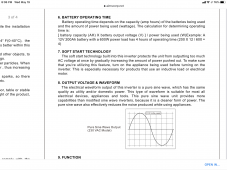Victron makes fine products, but there are other's as well. Along with Victron, there's Outback, Schneider, SMA, etc. The problem with these high quality inverters is that they are also expensive, and you're not likely to touch one of them for less than $1500 or so. You get what you pay for.
Inverters mostly come in three quality levels. 1) Non Chinese 2) Name Brand made in China 3) Generic branding made in China.
Nothing wrong with an inverter made in China by a non-Chinese company, but when you buy a Chinese brand (or no brand) inverter, then that's a problem.
For example, my main off-grid system uses SMA Sunny Islands, which have a normal price tag of just over $5500 each, and I have two of them. I also own an Outback Radian 8048 with a $4000 price tag. But beyond the split phase 240 stuff, I have a few 12 volt backup units as well, and for the small 12 volt stuff, I choose to stick with "GoPower!" brand. These are PSW inverters, made in China, but are not Chinese inverters. GoPower! brand has a reputation in the RV and boating industries and they are relatively cheap. GP inverters are not the only ones that are decent, there are others as well.. Lots of people go with AIMS, and while I'm not crazy about them myself, they seem to work well if you don't abuse them.
Even if your fridge works with a MSW inverter, the MSW inverter will most likely shorten the fridges life. They're not designed to operate on a modified sine wave.



